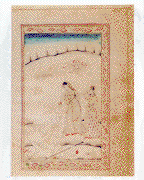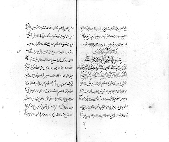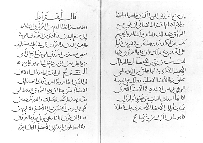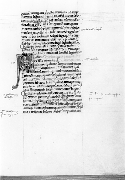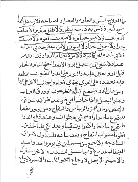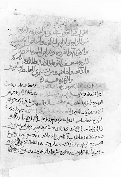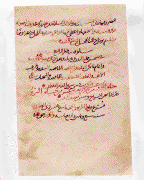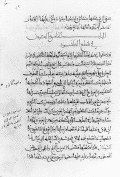Islamic Culture and the Medical Arts
Visual Catalog of the Illustrations (Part 2/9)
Woman, with attendant, reviving an elderly man.
Ink drawing, highlighted with gilt and watercolors, signed by an artist Shaykh Muhammad. One of several illustrations accompanying anonymous poetry following a Persian text on sexual hygiene.
Undated. Possibly 18th century India, possibly Kashmir.
NLM MS P24, fol. 18b
A very rare copy of Hunayn ibn Ishaq's Arabic translation of Galen's introductory treatise on the skeletal system,
On Bones for Beginners, known in Latin as De ossibus ad tirones.
NLM MS P26,
opening at fols. 62b-63a, the beginning of the treatise
A commentary on the Hippocratic treatise On the Nature of Man by Ibn al-Nafis (d. 1288/687 H). The copy was completed on 1 November 1269 (4 Rabi` I 668 H) by his pupil who worked from Ibn al-Nafis's autograph copy.
NLM MS A69, fols. 47b-48a.
No other copy recorded.
The Aphorisms of Hippocrates in the Latin translation made by Constantinus Africanus (d. 1087) of the Arabic version prepared in the 9th century by Hunayn ibn Ishaq.
This manuscript copy was produced in Oxford in the middle of the 13th century.
NLM Latin MS 78, fols. 24v-25r
Portrait of a scribe at work, artist unknown.
Perhaps intended as a portrait of Sayyid Husayn Yazdi,
the scribe of the treatise on wonders of the world comprising the volume.
It was painted in Iran sometime before 1546 (953 H), when a large owner's stamp was placed below the painting.
NLM MS P29, fol. 173a
A treatise on Prophetic Medicine by al-Dhahabi, who died in 1348 (748 H).
A Syro-Egyptian copy completed on 19 August 1464 (14 Dhu al-Hijjah 868 H).
NLM MS A79, fol. 17b
An illuminated presentation copy of the treatise on Prophetic Medicine by Jalal al-Din al-Suyuti (d. 1505/911 H).
Illuminated opening in gilt and opaque watercolors, with text framed in gold and ink lines and important words highlighted in blue.
Timurid, late 15th or early 16th century.
NLM MS A41, fol. 1b
The section on gastrointestinal diseases from The Comprehensive Book on Medicine (Kitab al-Hawi fi al-tibb) composed in Arabic by Abu Bakr Muhammad ibn Zakariya' al-Razi (d. ca 925/312 H).
Copy finished on 30 November 1094 (19 Dhu al-Qa`dah 487 H) by an unnamed scribe probably working in Baghdad.
NLM MS A17, p. 1, showing the beginning of the section
The final page of the copy of the Hawi by al-Razi, with the colophon in which the unnamed scribe gives the date he completed the copy as Friday, the 19th of Dhu al-Qa`dah in the year 487 (= 30 November 1094). It is the oldest volume in NLM and the third oldest Arabic medical manuscript known to be preserved today, NLM MS A17, p. 463.
The Complete Book of the Medical Art (Kitab Kamil al-sina`ah al-tibbiyah) by `Ali ibn al-`Abbas al-Majusi (d. 994/384 H). The copy was finished on 15 May 1208 (7 Dhu al-Qa`dah 604 H) by the Christian scribe Tawma ibn Yusuf ibn Sarkis al-Masihi, who copied it for Mahmud ibn Zaki al-Ruqiy al-Shihabi. Shortly afterward it became the property of `Atiyah a Jewish physician of Damascus. NLM MS A26.1, fol. 33a, open to the chapter on the eye condition pterygium (zafarah).
Previous Section (Visual Catalog, Part 1/9) | Table of Contents | Next Section
Last Reviewed: December 15, 2011



